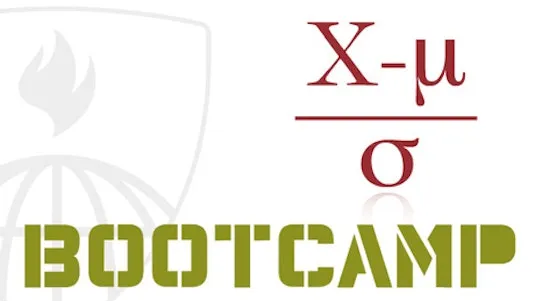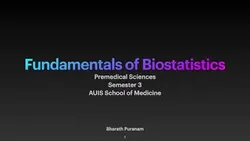Free Online Biostatistics Courses and Certifications 2024
Biostatistics is the application of statistical methods to the study of biological phenomena. It is used in a variety of fields, such as epidemiology, public health, and genetics. Courses in biostatistics are available at many universities and are suitable for students interested in data analysis and research. People with a background in biostatistics are in demand in the health and medical fields.
Popular Courses
















Biostatistics Courses
Career Trends
Career Prospects | Average Salary | Position Overview |
| Analytics Consultant | $115,861 per year | A consultant in data analytics assists data management teams and leaders in evaluating their data processes and identifying areas for enhancement. They utilize critical thinking skills to assess situations and provide potential solutions for problems. |
| Associate Director | $92,912 per year | An associate director is responsible for overseeing the daily operations of a specific department or area within a company or organization. They develop and implement strategic plans to ensure efficient completion of tasks and achieve organizational goals. |
| Senior Director | $155,280 per year | Senior directors have the responsibility of managing and supervising lower-level managers and employees across the organization or in a specific department, like marketing or sales. They develop strategies, monitor progress, and ensure the overall success of the organization. |
| Data Scientist | $186,565 per year | Data scientists are professionals who use their business acumen and analytical skills to examine and identify the questions that need to be answered, and determine where to find the related data. They are also skilled in mining, cleaning, and presenting data. Companies often hire data scientists to manage and analyze large volumes of unstructured data. |
| Staff Manager | $78,468 per year | A staff manager is a professional who leads and supervises a team of employees, providing guidance and support. They work across various industries and departments and are responsible for ensuring their team is motivated and performing at their best. |
Educational Paths
1. Bachelor's degree in statistics, mathematics, or a related field, followed by a master's degree in biostatistics.
2. Bachelor's degree in biology or a related field, followed by a master's degree in biostatistics.
3. Bachelor's degree in public health or a related field, followed by a master's degree in biostatistics.
4. Bachelor's degree in a health-related field, followed by a certificate or graduate-level courses in biostatistics.
5. Online courses and resources such as Coursera, edX, and DataCamp, which offer courses and programs in biostatistics and related fields.
6. Continuing education courses offered by professional organizations such as the American Statistical Association and the International Biometric Society.
7. Self-study using textbooks and resources such as "Introduction to Biostatistics" by Robert R. Sokal and F. James Rohlf and "Principles of Biostatistics" by Marcello Pagano and Kimberlee Gauvreau.
Frequently Asked Questions and Answers
Q1: What is master's in biostatistics?
A Master's in Biostatistics is an invaluable degree for those looking to pursue a career in data analysis. With this degree, students will gain the skills to interpret data, draw conclusions, create programs in two statistical packages, design research studies, and communicate their findings with peers and colleagues. With a Master's in Biostatistics, students will be well-equipped to answer questions about results and probability of an outcome, making them invaluable assets in the field of data analysis.
Q2: What is biostatistics used for?
Biostatisticians employ statistical tools to address critical research inquiries in the fields of medicine, biology, and public health. These questions may include assessing the effectiveness of a new drug, identifying the causes of cancer and other diseases, and estimating the expected survival duration for individuals with specific illnesses.
Q3: Is biostatistics a lot of math?
A comprehensive biostatistics education encompasses a solid foundation in mathematics, advanced coursework in statistical applications, theory, and computational skills, along with a profound grasp of one or more health sciences.
Q4: What is an example of biostatistics?
As an illustration, a biostatistician could delve into the examination of birth defects induced by selective serotonin reuptake inhibitors. They might also explore the relationship between exercise and hypokinetic diseases through statistical analysis. Another area of study for a biostatistician could involve investigating the adverse effects of environmental air pollution on the respiratory health of individuals.
Q5: What Biostatistics courses can I find on AZ Class?
On this page, we have collected free or certified 52 Biostatistics online courses from various platforms. The list currently only displays up to 50 items. If you have other needs, please contact us.
Q6: Can I learn Biostatistics for free?
Yes, If you don’t know Biostatistics, we recommend that you try free online courses, some of which offer certification (please refer to the latest list on the webpage as the standard). Wish you a good online learning experience!
ADVERTISEMENT
